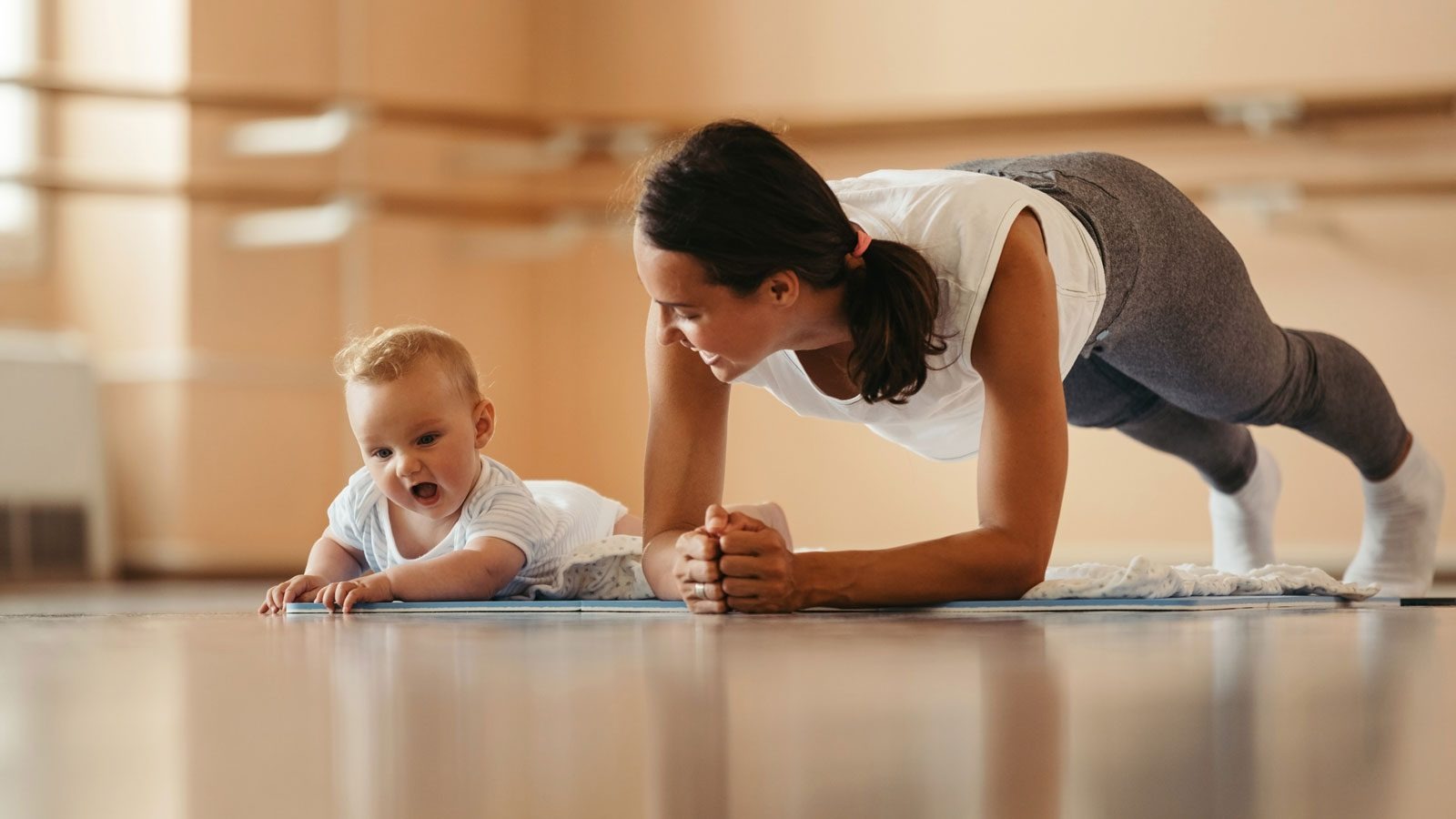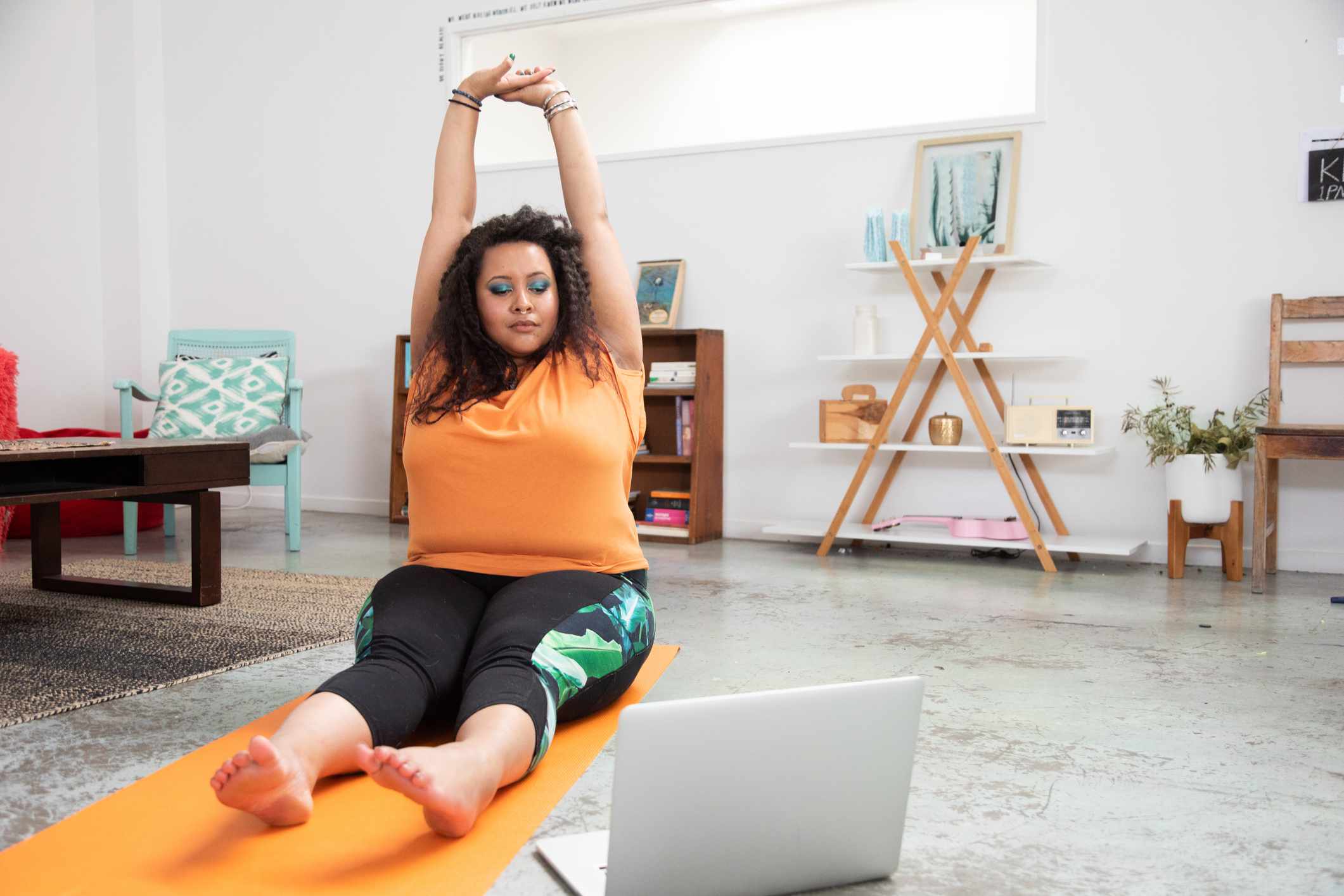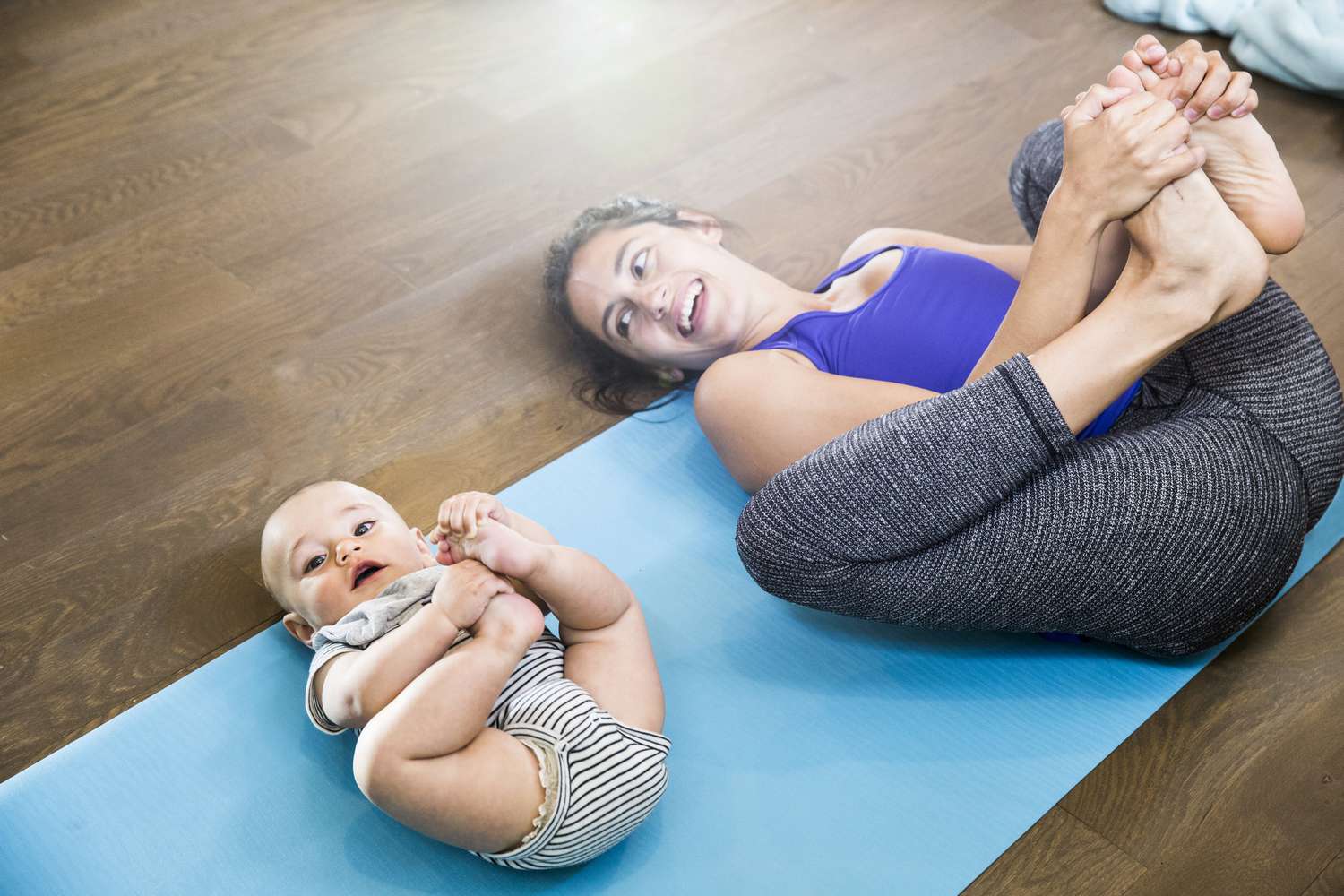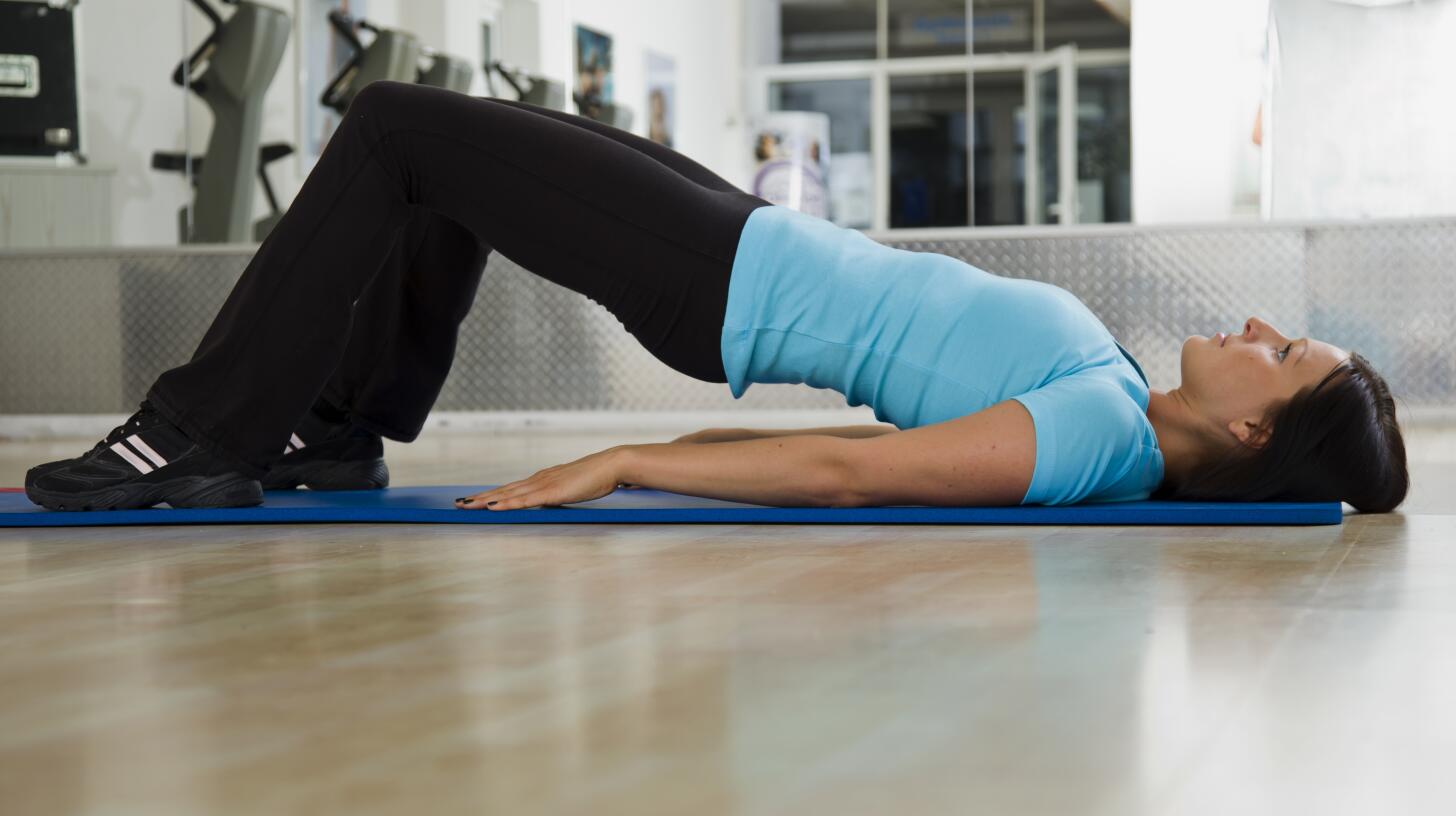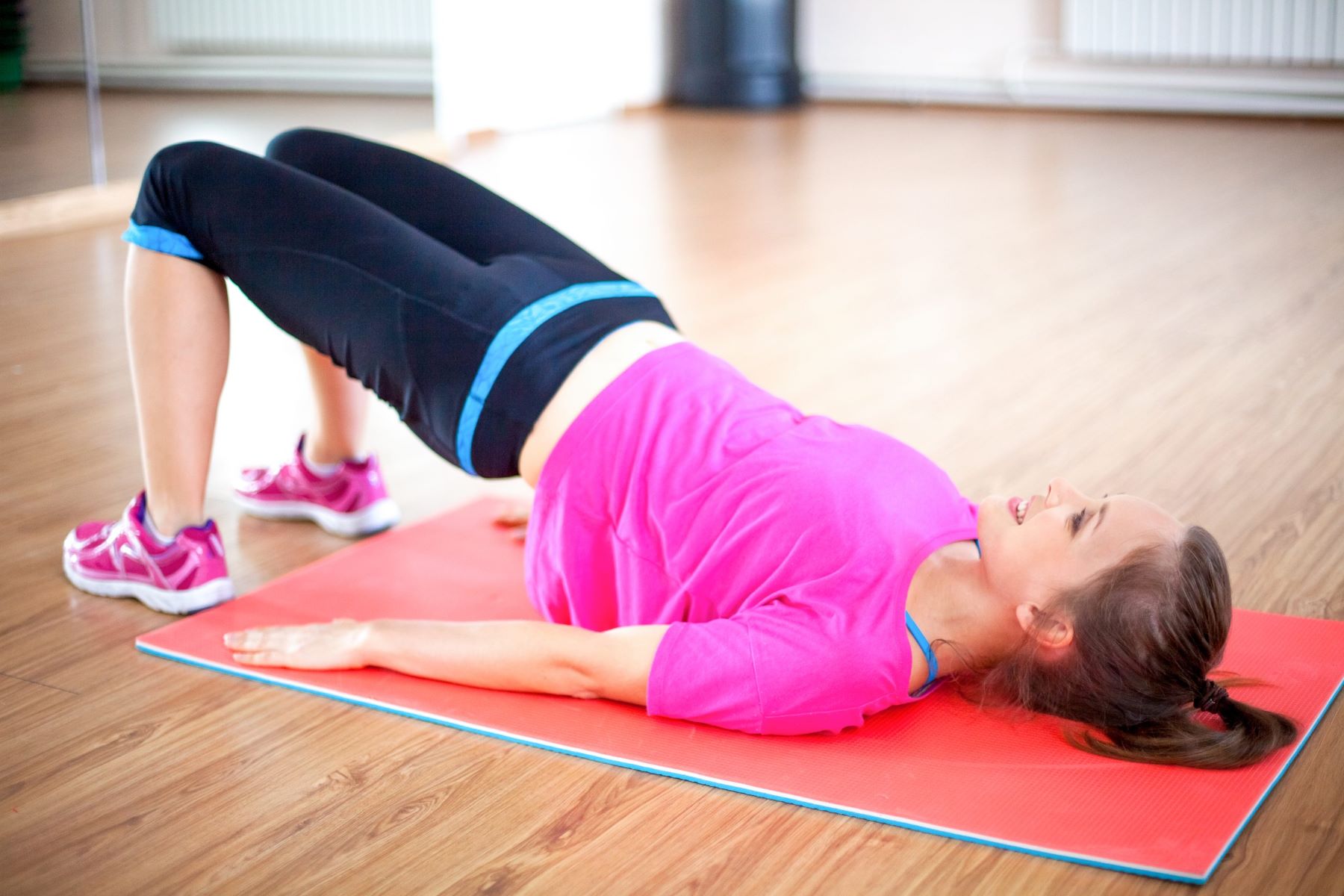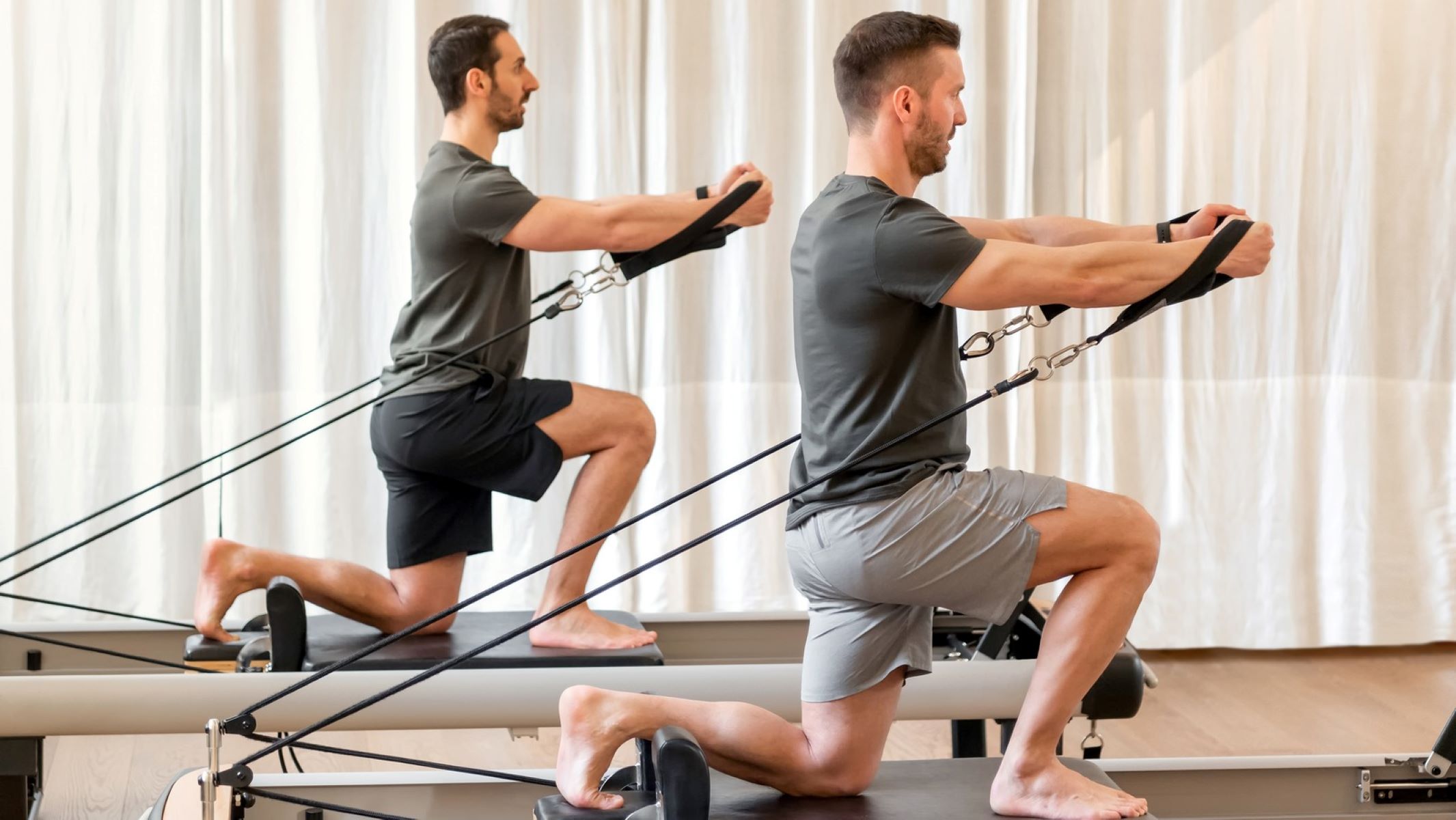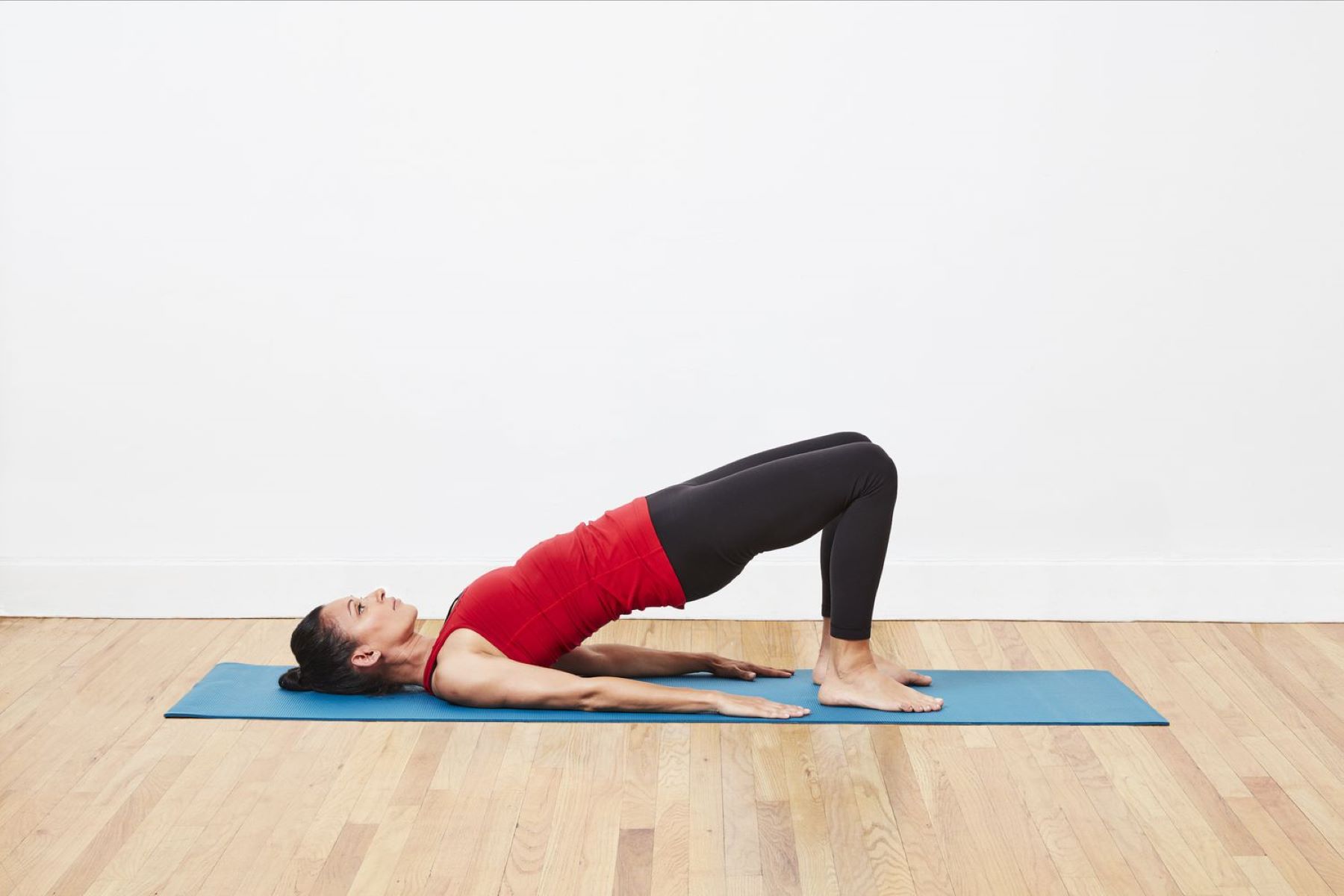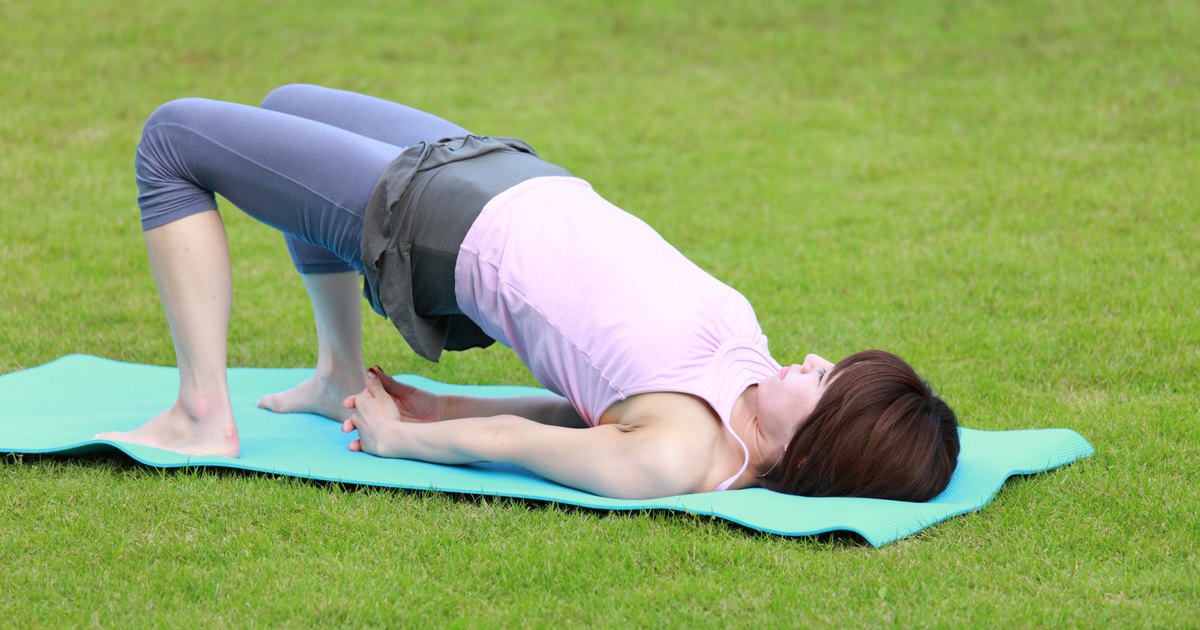

Featured
How To Exercise Your Pelvic Floor
Published: September 28, 2023
Featured guide on exercising your pelvic floor muscles for improved health and wellness. Learn simple and effective techniques to strengthen your pelvic floor muscles and improve your quality of life.
Introduction
The pelvic floor is an essential part of our body that often goes unnoticed and neglected. However, it plays a significant role in supporting the organs in the pelvic region, including the bladder, uterus, and rectum. Keeping the pelvic floor healthy and strong is crucial for overall well-being.
Exercising the pelvic floor may not be something that immediately comes to mind when we think about fitness routines. However, just like any other muscle in our body, the pelvic floor also needs regular exercise to stay in shape and function optimally. In this article, we will explore the importance of exercising the pelvic floor and provide you with techniques and tips to get started.
By understanding the pelvic floor and incorporating targeted exercises into your fitness regimen, you can experience numerous benefits. Whether you are young or old, male or female, pelvic floor exercises can help improve your quality of life. From better bladder control to enhanced sexual function, the payoff for strengthening this often overlooked muscle group is well worth the effort.
Before we delve into the exercises, it’s important to prepare yourself for the pelvic floor workout. Just like any other exercise routine, it requires proper technique, mindfulness, and consistency. So, let’s get ready to embark on a journey to a stronger, healthier pelvic floor!
Understanding the Pelvic Floor
The pelvic floor refers to a group of muscles that form a hammock-like structure at the base of the pelvis. It spans from the pubic bone in the front to the tailbone at the back of the body. The main function of these muscles is to provide support to the pelvic organs, including the bladder, uterus, and rectum.
There are three layers of muscles within the pelvic floor: the superficial layer, the deep layer, and the intermediate layer. Each layer has its own set of muscles that work together to maintain the strength and stability of the pelvic floor.
In addition to providing support, the pelvic floor muscles also play a crucial role in controlling urinary and bowel functions. When the muscles are weak or dysfunctional, it can lead to issues such as urinary incontinence, fecal incontinence, and pelvic organ prolapse.
The pelvic floor can be weakened due to various factors, including pregnancy and childbirth, aging, hormonal changes, obesity, chronic constipation, and repetitive heavy lifting. Moreover, certain medical conditions such as pelvic organ prolapse or prostate surgery can also contribute to pelvic floor weakness.
It’s important to note that both women and men have a pelvic floor, although the anatomy may differ slightly. Women have additional considerations due to the impact of pregnancy and childbirth on the pelvic floor muscles.
By understanding the importance of the pelvic floor and how it functions, we can appreciate the need for regular exercise to keep it strong and healthy. The next section will outline the numerous benefits of exercising the pelvic floor.
Benefits of Exercising the Pelvic Floor
Exercising the pelvic floor muscles offers a wide range of benefits that directly impact our overall health and well-being. These exercises, when performed consistently and correctly, can provide both immediate and long-term advantages. Let’s explore some of the key benefits of exercising the pelvic floor.
1. Improved Bladder Control: One of the primary benefits of pelvic floor exercises is the improvement in bladder control. Strengthening these muscles can help prevent or reduce urinary incontinence, especially in situations such as coughing, sneezing, or laughing, which put pressure on the bladder. This can significantly enhance your quality of life and boost your confidence.
2. Enhanced Sexual Function: Strong pelvic floor muscles play a vital role in sexual function for both men and women. By increasing blood flow to the pelvic region and improving muscle tone, these exercises can lead to improved sexual sensations and stronger orgasms. Additionally, women may experience increased vaginal tightness and improved ability to reach orgasm.
3. Prevention and Management of Pelvic Organ Prolapse: Pelvic organ prolapse occurs when the pelvic organs descend or shift out of their normal position. Regular pelvic floor exercises can help prevent this condition or manage its symptoms by strengthening the muscles that support the pelvic organs. This can reduce discomfort and the risk of complications.
4. Improved Posture and Core Stability: The pelvic floor muscles are an integral part of the core muscles that provide support and stability to the spine and pelvis. Strengthening these muscles can help improve posture, reduce back pain, and enhance overall core strength. A strong core is beneficial for daily activities and can aid in preventing injuries.
5. Faster Recovery after Childbirth or Pelvic Surgery: Pregnancy and childbirth can cause significant stress and weakening of the pelvic floor muscles. Performing pelvic floor exercises during pregnancy and after delivery can help speed up recovery and restore the strength of these muscles. Pelvic floor exercises are also beneficial for individuals who have undergone pelvic surgery, such as prostate surgery.
6. Prevention of Constipation: The pelvic floor muscles provide support to the rectum and help regulate bowel movements. Weakness in these muscles can contribute to constipation and difficulty with bowel movements. Regular exercise can improve muscle tone and increase the efficiency of the pelvic floor, promoting healthy bowel function.
Remember, the benefits of exercising the pelvic floor are not limited to the physical aspects. Strengthening these muscles can also have a positive impact on your mental well-being, boosting your self-confidence and overall satisfaction with your body.
Preparing for Pelvic Floor Exercises
Before diving into pelvic floor exercises, it is essential to adequately prepare yourself to ensure you get the most out of your workout. Here are some steps you can take to get ready for pelvic floor exercises:
1. Consult with a Healthcare Provider: If you have any underlying medical conditions or concerns about your pelvic floor, it is advisable to consult with a healthcare provider before beginning any exercise routine. They can assess your specific needs, provide personalized recommendations, and address any potential risks or limitations.
2. Locate Your Pelvic Floor Muscles: Familiarize yourself with the location of your pelvic floor muscles. To do this, imagine halting the flow of urine or preventing the release of gas from the rectum. The muscles used to do this are your pelvic floor muscles. You can also try contracting the muscles around your vagina or anus. Becoming aware of these muscles will help you engage them more effectively during exercises.
3. Correct Breathing Technique: Proper breathing technique is crucial for pelvic floor exercises. Take deep breaths, inhaling through your nose and exhaling through your mouth. As you exhale, try to lift and engage your pelvic floor muscles gently. Avoid holding your breath or straining during exercises, as this can put unnecessary strain on the pelvic floor.
4. Empty Your Bladder: Before starting pelvic floor exercises, make sure to empty your bladder. Having a full bladder can interfere with your ability to properly engage and isolate the pelvic floor muscles during the exercises.
5. Choose a Comfortable Position: Find a comfortable position that allows you to fully concentrate on the pelvic floor exercises. You can perform the exercises while lying on your back, sitting on a stable chair, or standing upright. Experiment with different positions to find what works best for you.
6. Create a Quiet and Relaxing Environment: Find a quiet and peaceful space where you can focus and concentrate without distractions. Dim the lights, play relaxing music, or practice in a room where you can have some privacy. Creating a serene environment will help you relax and get into the right mindset for your pelvic floor workout.
By following these steps and adequately preparing yourself, you will be able to approach your pelvic floor exercises with confidence and maximize the benefits you derive from them. Remember, consistency is key, so aim to establish a regular exercise routine to maintain the strength and health of your pelvic floor muscles.
Pelvic Floor Exercise Techniques
Now that you are prepared and ready to begin pelvic floor exercises, let’s explore some effective techniques to target and strengthen these important muscles:
1. Kegel Exercises: Kegels are one of the most popular and effective exercises for the pelvic floor. To perform a Kegel, contract your pelvic floor muscles as if you are trying to stop the flow of urine or prevent the release of gas. Hold this contraction for a few seconds, then release. Start with a few repetitions and gradually increase the duration and number of repetitions over time. Remember to breathe normally and avoid tensing your abdominal or buttock muscles.
2. Squat Exercises: Squats are compound exercises that engage multiple muscles, including the pelvic floor. Stand with your feet hip-width apart, toes slightly turned out. Lower your body into a squat position by bending your knees and pushing your hips back, keeping your chest lifted and core engaged. As you rise back up, focus on squeezing your pelvic floor muscles. Repeat for several repetitions, gradually increasing as your strength improves.
3. Bridge Exercises: Bridges are another effective movement that targets the pelvic floor muscles. Lie on your back with your knees bent and feet flat on the floor, hip-width apart. Lift your hips off the ground, forming a straight line from your knees to your shoulders. Hold this position for a few seconds, engaging your pelvic floor muscles. Lower your hips back down and repeat for several repetitions.
4. Core Exercises: Strengthening your core can indirectly benefit the pelvic floor muscles. Incorporate exercises such as planks, modified crunches, and Pilates into your routine. These exercises engage the deep abdominal muscles, which provide support to the pelvic floor.
5. Yoga and Pilates: Practicing yoga and Pilates can be beneficial for the pelvic floor. Certain poses, such as the cat-cow, child’s pose, and pelvic tilts, can help stretch and strengthen the pelvic floor muscles. Additionally, the focus on breath control in these practices helps improve awareness and coordination of the pelvic floor muscles.
Remember, it’s crucial to maintain proper form and technique during pelvic floor exercises. Concentrate on isolating the pelvic floor muscles and avoid unnecessary tension in other areas of your body. Start with a few repetitions and gradually increase over time as your muscles become stronger and more accustomed to the exercises.
Stay consistent with your workouts and be patient. It may take time to see noticeable improvements, but with dedicated practice, you will experience the benefits of a strong and healthy pelvic floor.
Kegel Exercises
Kegel exercises, also known as pelvic floor exercises, are specifically designed to target and strengthen the muscles of the pelvic floor. These exercises can be done by both men and women and are an effective way to improve bladder control, enhance sexual function, and support overall pelvic health.
To perform Kegel exercises, follow these steps:
- Identify your pelvic floor muscles: Begin by identifying the muscles of your pelvic floor. Focus on the muscles that you would use to stop the flow of urine or prevent the release of gas from the rectum.
- Perfect your technique: Once you have identified the pelvic floor muscles, contract them by squeezing and lifting them inward. Imagine pulling them up and in towards your body’s core. Be careful not to contract your abdominal, buttock, or thigh muscles.
- Hold the contraction: Hold the contraction for a few seconds, aiming for a comfortable and controlled squeeze. It’s important not to hold your breath while performing the exercise. Remember to breathe freely throughout the entire exercise.
- Release and relax: After holding the contraction, release the pelvic floor muscles and allow them to relax completely. Take a few seconds to rest before repeating the exercise.
- Repeat and gradually increase: Start with a few repetitions of Kegel exercises, gradually working your way up to 10-15 repetitions per session. Focus on quality rather than quantity, ensuring that each contraction is performed correctly.
For optimal results, incorporate Kegel exercises into your daily routine. You can perform them while sitting, standing, or lying down, making it convenient to do them anytime and anywhere. Over time, as your pelvic floor muscles become stronger, you can increase the duration of each contraction and the number of repetitions.
It’s important to note that consistency is key when it comes to Kegel exercises. Like any muscle in the body, the pelvic floor muscles require regular exercise to maintain their strength and functionality. Aim to incorporate Kegels into your routine at least three times a week.
In addition to regular Kegel exercises, it can be helpful to combine them with other pelvic floor exercises, such as squats and bridges, to engage a wider range of muscles in the pelvic region. This comprehensive approach will provide a well-rounded workout for your pelvic floor muscles.
Remember, it may take time to notice significant improvements in bladder control and pelvic strength. Be patient and consistent with your Kegel exercises, and over time, you will reap the benefits of a strong and healthy pelvic floor.
Squat Exercises
Squat exercises are a fantastic way to strengthen multiple muscles in the lower body, including the pelvic floor. By incorporating squats into your workout routine, you can build overall lower body strength while specifically targeting the pelvic floor muscles.
Here’s a step-by-step guide on how to perform squat exercises:
- Start in a standing position with your feet shoulder-width apart. You can choose to keep your arms extended in front of you or place your hands on your hips.
- Engage your core by pulling your belly button towards your spine and having a slight arch in your lower back.
- Lower your body by bending your knees and pushing your hips back as if you are sitting back into a chair. Ensure that your weight is evenly distributed through your feet.
- Go down as far as you comfortably can, aiming for a 90-degree angle at your knees. Keep your chest lifted and your gaze forward as you lower your body.
- Once you reach the bottom of the squat, engage your pelvic floor muscles by squeezing and lifting them upward.
- Push through your heels and extend your legs to return to the starting position, squeezing your glutes as you stand back up.
- Repeat the movement for several repetitions, focusing on maintaining proper form and engaging the pelvic floor muscles throughout the exercise.
As you become more comfortable with squats, you can increase the intensity by adding weights such as dumbbells or using a barbell. This added resistance will challenge your muscles and further promote strength gains in the pelvic floor and lower body.
It’s important to note that proper form is crucial when performing squats. Avoid letting your knees collapse inward and ensure that they track over your toes. Keep your back straight and your core engaged throughout the movement.
By incorporating squat exercises into your routine, you’ll not only strengthen your pelvic floor muscles but also develop strong glutes, quadriceps, and hamstrings. These muscle groups work together to provide stability and support to the entire lower body.
Remember, listen to your body and do not push through any pain or discomfort. Start with a weight and level of difficulty that suits your current fitness level and gradually increase as you build strength and confidence. Consistency is key, so aim to include squats in your workouts a few times a week to reap the benefits of a strong and resilient pelvic floor.
Bridge Exercises
Bridge exercises are a powerful way to strengthen and engage the pelvic floor muscles while also targeting the glutes, hamstrings, and lower back. By incorporating bridge exercises into your workout routine, you can develop a strong and resilient pelvic floor and improve overall lower body strength.
Follow these steps to perform bridge exercises effectively:
- Lie on your back with your knees bent and feet flat on the floor, hip-width apart. Place your arms at your sides, palms facing down.
- Engage your core by drawing your belly button towards your spine, and gently flatten your lower back against the floor.
- Press through your heels, activating your glutes and hamstrings, and lift your hips off the ground until your body forms a straight line from your knees to your shoulders.
- At the top of the bridge position, squeeze your glutes and engage your pelvic floor muscles by lifting them upward. Imagine drawing them towards your belly button. Hold this contraction for a few seconds.
- Slowly lower your hips back down to the starting position, maintaining control and allowing your spine to roll down one vertebra at a time.
- Repeat the movement for several repetitions, focusing on maintaining proper form and engaging the pelvic floor muscles throughout the exercise.
Remember to keep your core engaged and your breathing steady throughout the exercise. Avoid arching your back excessively or letting your knees fall inwards. Focus on lifting your hips using your glutes and hamstrings, while actively engaging your pelvic floor to maximize the benefits.
You can modify bridge exercises by placing a resistance band above your knees or by elevating your feet on a stable surface. These variations can further challenge your muscles and enhance the effectiveness of the exercise.
Bridge exercises not only target and strengthen the pelvic floor muscles but also promote overall stability and strength in the lower body. With regular practice, you can improve your pelvic floor function, support your lower back, and enhance your performance in various physical activities.
As with any exercise, it’s important to listen to your body and work within your comfort level. Begin with a number of repetitions that feels manageable and gradually increase the intensity and volume as your strength improves. Aim to include bridge exercises in your routine two to three times a week to achieve optimal outcomes.
Posture and Breathing during Pelvic Floor Exercises
Proper posture and breathing technique are crucial aspects of performing effective pelvic floor exercises. By maintaining the correct posture and utilizing the appropriate breathing patterns, you can optimize the engagement of your pelvic floor muscles and enhance the effectiveness of your workout.
Here’s a breakdown of how to maintain good posture and practice proper breathing during pelvic floor exercises:
Posture:
- Stand tall or sit on a chair with your spine in a neutral position, avoiding any slouching or rounding of the shoulders.
- Tuck your chin slightly to align your head with your spine.
- Engage your core by gently pulling your belly button in towards your spine, creating a slight contraction in your abdominal muscles.
- Imagine lengthening your spine from the base of your tailbone to the crown of your head, maintaining a sense of elongation and alignment.
- Avoid gripping or tensing your buttocks; instead, focus on keeping them relaxed and neutral.
- Throughout the exercise, visualize your body being lifted and supported by the engagement of your pelvic floor muscles.
Breathing:
- Take slow, deep breaths in through your nose, allowing your diaphragm to expand and your belly to rise.
- As you exhale through your mouth, gently contract your pelvic floor muscles, lifting and tightening them.
- Continue to breathe steadily and rhythmically, focusing on maintaining a relaxed and controlled breath pattern throughout the exercise.
- Avoid holding your breath or straining during the exercise, as this can increase tension in the pelvic floor and hinder its proper engagement.
By maintaining proper posture and employing the correct breathing technique, you can improve the effectiveness of your pelvic floor exercises. Proper posture helps align your body and engage the appropriate muscles, allowing for optimal activation of the pelvic floor. Correct breathing ensures that you are supporting the engagement of the pelvic floor muscles without unnecessary tension or strain.
Remember to maintain good posture and practice proper breathing not only during your pelvic floor exercises but throughout your daily activities as well. Consistency is key, so aim to incorporate these postural and breathing habits into your everyday life to support the health and strength of your pelvic floor muscles.
Frequency and Duration of Pelvic Floor Exercises
When it comes to pelvic floor exercises, consistency is key. To see the best results and experience improvements in bladder control, pelvic strength, and overall well-being, it’s important to establish a regular routine. Here’s a guide to help you determine the frequency and duration of your pelvic floor exercises:
Frequency:
It is generally recommended to perform pelvic floor exercises at least three times a week. This regular frequency allows for proper muscle engagement, training, and strengthening. By incorporating sessions into your weekly routine, you provide your muscles with sufficient time to rest and recover in between workouts. However, it’s important to note that every individual is unique, and you should adjust the frequency based on your comfort level and any recommendations from your healthcare provider.
Duration:
The duration of your pelvic floor exercises can vary depending on your current strength and fitness level. Initially, start with shorter sessions and gradually increase the duration as your muscles become stronger and more comfortable with the exercises. Aim for about 10-15 minutes per session, focusing on quality rather than quantity. It’s better to perform a few repetitions with good form and proper muscle engagement than rushing through numerous repetitions with poor technique. As you progress and feel more confident, you can extend the duration of each session up to 20-30 minutes.
Integrating into your routine:
To ensure that you consistently perform your pelvic floor exercises, it can be helpful to integrate them into your daily routine. Choose specific times of the day that work best for you, such as first thing in the morning, during a break at work, or before going to bed. By incorporating them into your routine, you form a habit and make it easier to stick to your exercise program.
Tracking progress:
Tracking your progress can be motivating and help you stay on track with your pelvic floor exercises. Create a log or use a tracking app to record the number of repetitions, the duration of each session, and any changes or improvements you notice over time. This can serve as a visual reminder of your dedication and progress, encouraging you to continue with your routine.
Remember, consistency is more important than intensity. Even if you can only manage shorter sessions initially, performing pelvic floor exercises regularly will yield positive results. As your muscles become stronger, you can gradually increase the duration and intensity of your sessions. Be patient with yourself, and celebrate each step forward on your journey to a stronger and healthier pelvic floor.
Additional Tips for Strengthening the Pelvic Floor
In addition to regularly performing pelvic floor exercises, there are several other tips and techniques that can further aid in strengthening your pelvic floor muscles. Incorporating these practices into your daily routine can enhance the effectiveness of your workouts and promote optimal pelvic floor health. Here are some additional tips to consider:
1. Maintain a Healthy Weight: Excess weight can put added pressure on your pelvic floor muscles, weakening them over time. Maintaining a healthy weight through a balanced diet and regular exercise can help alleviate unnecessary strain on the pelvic floor and support its strength and functionality.
2. Stay Hydrated: Drinking an adequate amount of water each day can help maintain proper bladder function and prevent constipation, which can strain the pelvic floor. Aim to drink at least 8 cups (64 ounces) of water daily to support overall pelvic health.
3. Avoid Straining during Bowel Movements: Straining while having a bowel movement can exert excessive pressure on the pelvic floor. Ensure that you have a healthy diet with plenty of fiber and fluids to promote regular bowel movements and prevent the need for straining.
4. Correct Lifting Technique: When lifting heavy objects, use your legs and avoid straining and holding your breath. Engage your pelvic floor muscles and maintain good posture to support your spine and protect your pelvic floor from unnecessary pressure.
5. Manage Chronic Coughing or Sneezing: Chronic coughing or sneezing can put strain on the pelvic floor muscles over time. If you suffer from these conditions, consult with a healthcare provider to manage and treat the underlying causes, which can alleviate the strain on your pelvic floor.
6. Incorporate Yoga or Pilates: Practicing yoga or Pilates can help improve flexibility, promote body awareness, and enhance pelvic floor strength. Certain poses and exercises target the pelvic floor muscles directly and provide additional support for their strength and function.
7. Avoid Prolonged Sitting: Sitting for long periods can cause increased pressure on the pelvic floor. If your job or lifestyle involves prolonged sitting, take regular breaks to stand, stretch, and move around. This helps relieve the pressure on the pelvic floor and promotes better circulation.
8. Seek Professional Guidance: If you continue to experience issues or have concerns about your pelvic floor, consider seeking guidance from a pelvic floor physical therapist or healthcare provider specializing in pelvic floor health. They can provide personalized advice, exercises, and techniques tailored to your specific needs.
By incorporating these additional tips into your lifestyle, you can support the strength and health of your pelvic floor muscles. Remember that consistency and commitment are key when it comes to pelvic floor health. Stay dedicated to your exercise routine, adopt healthy habits, and be patient with yourself as you work towards a stronger, healthier pelvic floor.
Conclusion
Taking care of your pelvic floor is crucial for overall health and well-being. By incorporating regular pelvic floor exercises into your fitness routine, you can strengthen these often-neglected muscles and experience a multitude of benefits. From improved bladder control and enhanced sexual function to better posture and core stability, a strong pelvic floor lays the foundation for a healthy and active lifestyle.
Understanding the anatomy and function of the pelvic floor is the first step towards effectively exercising this muscle group. Techniques such as Kegel exercises, squats, and bridge exercises specifically target the pelvic floor, while proper posture and breathing add an extra dimension of engagement and effectiveness.
Consistency is key when it comes to pelvic floor exercises. Aim to perform them at least three times a week, gradually increasing the duration as your muscles become stronger. Integrating these exercises into your daily routine and tracking your progress can help you stay motivated and on track.
In addition to exercise, maintaining a healthy weight, staying hydrated, and practicing good bowel habits are all essential for pelvic floor health. Avoiding excessive straining and seeking professional guidance if needed can further support the strength and functionality of your pelvic floor.
Remember, be patient with yourself and listen to your body. Results may take time, but with dedication and consistency, you will experience the benefits of a strong and resilient pelvic floor.
So, take the time to prioritize your pelvic floor health. Your body will thank you for it, and you’ll be on your way to a stronger and more confident you.
